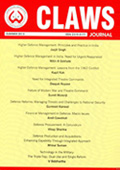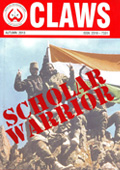| #521 | 1104 | March 07, 2011 | By Brig SK Chatterji (Retd) | |||||
|
The deal for long overdue guns for our artillery seems to be slipping out of reckoning once again. This time, it appears that the blame is squarely within our establishment. The 400 odd pieces of Bofors 155mm Field Howitzers that we purchased over 25 years back, are the last of modern guns that we have added.It’s not only a question of the existing Bofors guns aging, but the problem is compounded by 105mm Field guns, produced indigenously, also due for replacement. The Indian army, in tune with the trend all over the world had decided to switch over to 155mm calibre as its basic equipment for the field artillery. However, the repeated setbacks that efforts at procurement of guns have faced, has led to a piquant situation. Today, almost every reputed manufacturer globally, capable of supplying 155 calibre guns, stands blacklisted. Ironically though, no information about the details of their possible dubious dealings with our officials have been made available. There is of course a departure this time, with information of the leaks of the trial reports being compromised within our establishment, an enquiry has been ordered. In blacklisting the companies, however, no such probes were seemingly considered essential.Notwithstanding the procurement of guns, artillery has added technologically superior equipment to its inventory in the last few decades. The progress of indigenised weapons has helped the artillery in multiple areas. The most pronounced capability enhancement is noticeable in the area of missiles. After the Prithvi family of missiles, we have been able to progress with the Brahmos. The later is a cruise missile that flies at very low heights thus rendering detection and destruction far more difficult. In the area of rocket artillery with only its vintage 122mm Grad multi barrel rocket launcher, a power packed increment consisting of the indigenous Pinaca, and the Russian Smerch have been added. Both have longer ranges, upto 40 and 90 km, respectively, and provide better strategic options in fighting the depth battle. The current limitation often encountered in supporting armoured formations in deep thrusts, is considerably mitigated by the enhanced fire power that rocket artillery can deliver at longer ranges.We have also progressed considerably in the area of unmanned aerial vehicles (UAV). In addition to the Israeli Searchers in our inventory, Herons, also of Israeli origin, have been added. Herons have far more endurance and can carry heavier payloads. The problem area in terms of employment of UAVs remains the provisioning of specially trained officers. With our system not really too generous in rewarding specialists, we tend to lose trained UAV pilots without optimum utilization on such assignments. It may be possible to review the intake policy of such officers and find a way out by inducting young officers who become medical categories on account of operational reasons. There has also been ongoing capability enhancement in other areas like Artillery Command Control and Communication Systems as also Battle Field Surveillance Systems. When fully operationalised, these systems would certainly enhance our capabilities in terms of target detection and identification, decision making for engagement and allotment of suitable platforms for strike. Also, elaborate post strike damage assessment would be possible, thus aiding decision making.Notwithstanding the sectorial progress in certain areas, there is reason for alarm when it comes to the basic artillery weapon, a gun. Had we been more prudent when the companies were blacklisted and taken action against officials who were party to such companies’ indiscretions, we would possibly have avoided the setback we are faced with today. With accountability having been given the short shrift by the ministry, perhaps the feeling that you can get away with it has spread within our ranks also. Courtesy: Purple Beret, March 2011 http://www.purpleberet.com/details/cs_detail.aspx?id=165 (The views expressed in the article are that of the author and do not represent the views of the editorial committee or the centre for land warfare studies) | ||||||||
| ||||||||

|
Brig SK Chatterji (Retd) |


